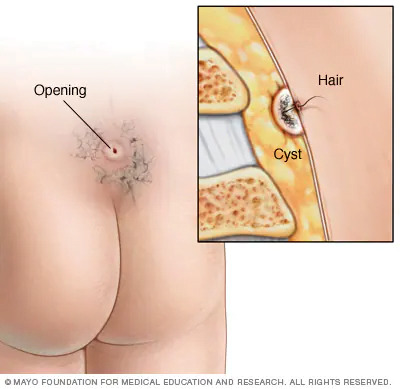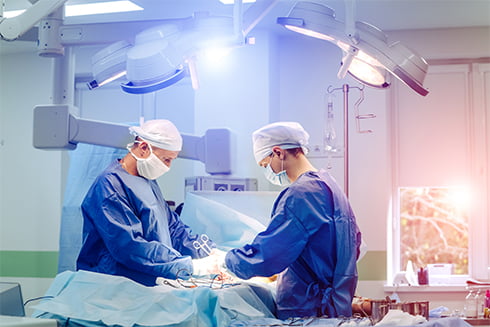Pilonidal Sinus Treatment in Bangalore
- Minimal Pain | No Stitches
- All Insurance Accepted
- No-Cost EMI

Book an Appointment .sticky-column{ position: sticky; position: -webkit-sticky; top: 3rem; }
Pilonidal Sinus Treatment
A pilonidal cyst is an abnormal pocket in the skin that usually contains
hair and skin debris. A pilonidal cyst is almost always located near the
tailbone at the top of the cleft of the buttocks.
Symptoms
When it’s infected, a pilonidal cyst becomes a swollen mass (abscess). Signs and symptoms of an infected pilonidal cyst include:
- Pain
- Reddening of the skin
- Drainage of pus or blood from an opening in the skin
- Foul smell from draining pus
Risk factors
When it’s infected, a pilonidal cyst becomes a swollen mass (abscess). Signs and symptoms of an infected pilonidal cyst include:
- Male sex
- Obesity
- Inactive lifestyle
- Occupation requiring prolonged sitting
- Excess body hair
- Stiff or coarse hair
Complications
- If a chronically infected pilonidal cyst isn't treated properly, you may be at slightly increased risk of developing a type of skin cancer called squamous cell carcinoma.
- Prevention
To help prevent pilonidal cysts, try to:
- Keep the area clean
- Lose weight if needed
- Avoid prolonged sitting

Treatment
People with obesity are more likely to develop a number of potentially serious health problems, including:
After surgery, your doctor may choose to:
- Leave the wound open : In this option, the surgical wound is left open and packed with dressing to allow it to heal from the inside out. This process results in a longer healing time but usually a lower risk of a recurring pilonidal cyst infection.
- Close the wound with stitches : While the healing time is shorter with this option, there's a greater risk of recurrence. Some surgeons make the incision to the side of the cleft of the buttocks, where healing is particularly difficult.
Causes
The exact cause of pilonidal cysts isn’t clear. But most pilonidal cysts appear to be caused by loose hairs that penetrate the skin.
Friction and pressure — skin rubbing against skin, tight clothing, bicycling, long periods of sitting or similar factors — force the
hair down into skin. Responding to the hair as a foreign substance, the body creates a cyst around the hair.
This explanation accounts for rare cases of pilonidal cysts that occur in parts of the body other than near the tailbone. For
example, barbers, dog groomers and sheep shearers have developed pilonidal cysts in the skin between fingers.

